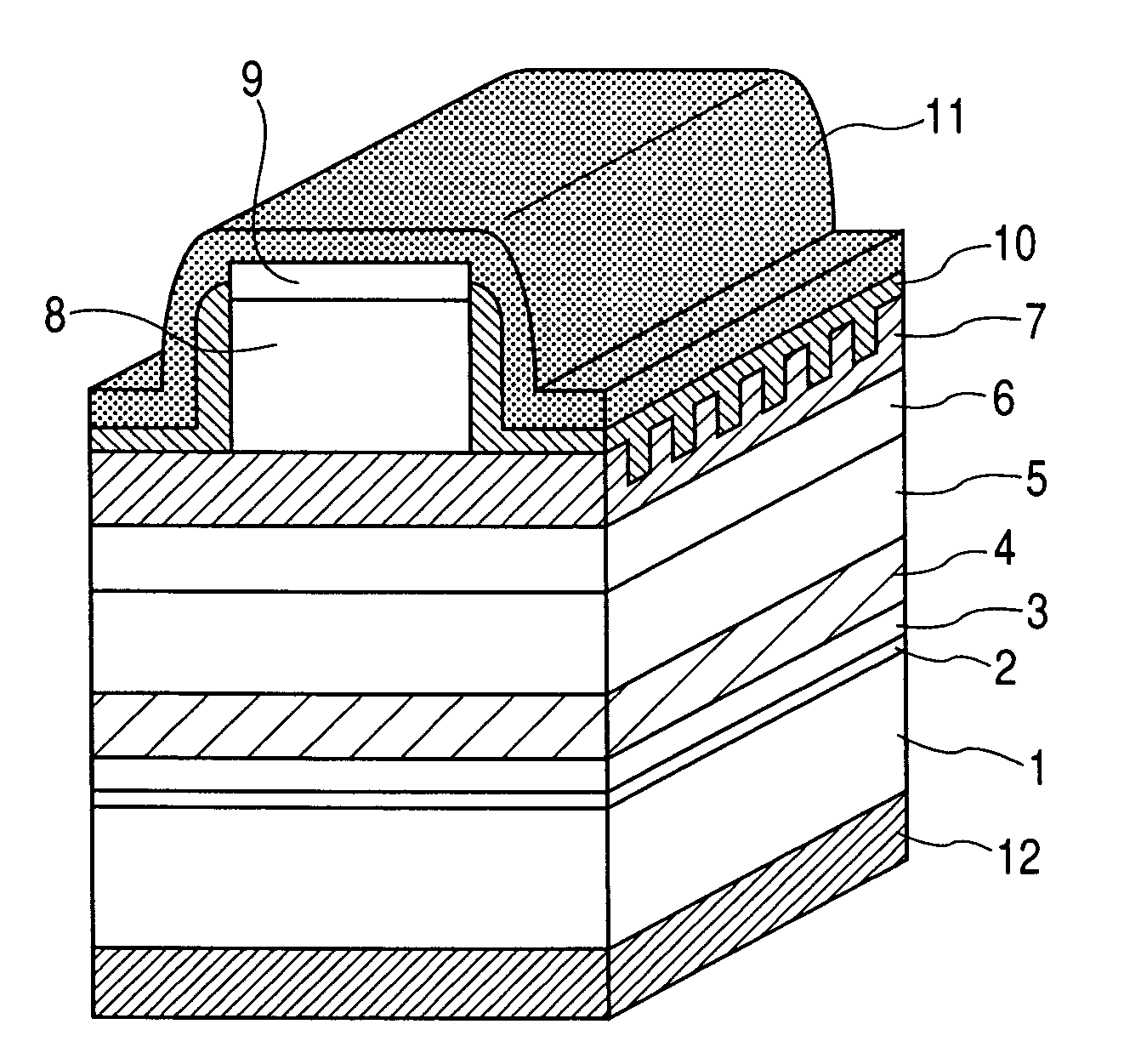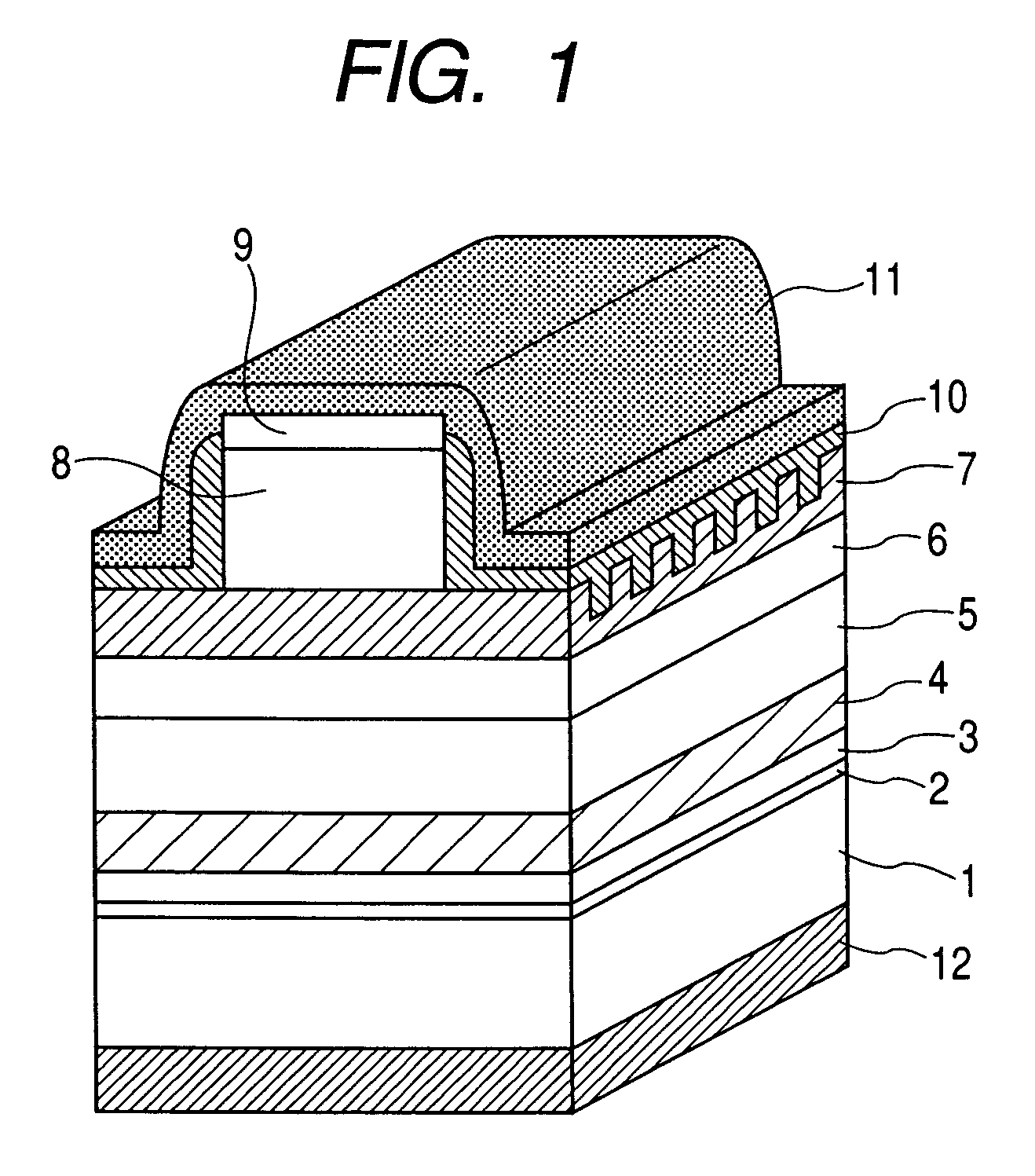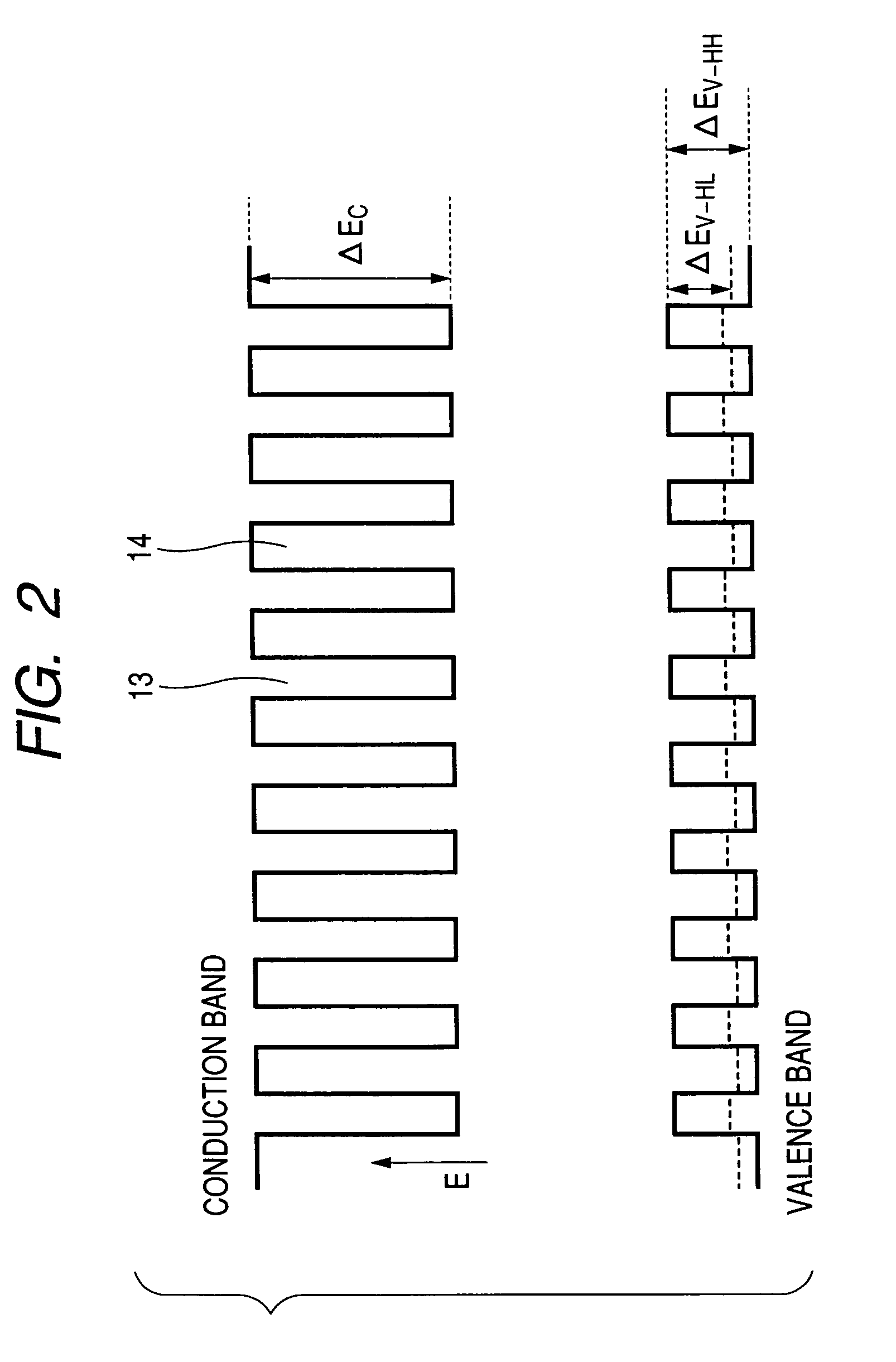Optical semiconductor device
a technology of optical semiconductors and semiconductor lasers, applied in semiconductor lasers, optics, instruments, etc., can solve the problems of uneven hole formation within the mqw structure, affecting the influence of valence band mixing, and reducing the effective mass, so as to improve the degree of freedom, improve reliability, and reduce the effect of driving voltag
- Summary
- Abstract
- Description
- Claims
- Application Information
AI Technical Summary
Benefits of technology
Problems solved by technology
Method used
Image
Examples
first embodiment
[0031]A first embodiment is an example in which the present invention is applied to a 1.3-μm-band DFB (distributed feedback) laser for optical-fiber communication. This laser can be of a known structure, except for active layers. A perspective view of the laser structure employed in the present embodiment is shown in FIG. 1. Reference number 1 in FIG. 1 denotes an n-type InP wafer, which also functions as a lower cladding layer. Reference number 2 denotes a 30-nm-thick n-type InAlAs layer, and 3 denotes a GRIN-SCH (Graded-Index—Separate Confinement Structure) layer of 0.08-μm-thick n-type InGaAlAs with a carrier concentration of 1×1018 cm−3. Reference number 4 denotes an MQW layer that includes a quantum well layer formed of In0.733Ga0.132Al0.135As, and a barrier layer formed of In0.36Ga0.32Al0.32As0.92Sb0.08. The quantum well layer has a thickness of 5 nm and a compressive strain of 1.4% with respect to the InP wafer, and the barrier layer has a thickness of 8 nm and a tensile stra...
second embodiment
[0040]A second embodiment is an example in which the present invention is applied to a 1.3-μm-band DFB (distributed feedback) laser for optical-fiber communication. This laser can be of a known structure, except for active layers, and a laser of a buried heterostructure, fabricated on such a p-type InP wafer as shown in FIG. 7, is applied in the present embodiment. Reference number 19 in FIG. 7 denotes a p-type InP wafer, which also functions as a lower cladding layer. Reference number 23 denotes an electron-stopping layer of 0.03-μm-thick p-type InAlAs with a carrier concentration of 9×1017 cm3, and 20 denotes an SCH layer of 0.06-μm-thick p-type InGaAlAs with a carrier concentration of 8×1017 cm−3 and a composition wavelength of 0.92 μm. Reference number 21 denotes an MQW layer that includes a quantum well layer formed of In0.329Ga0.649Al0.022As, and a barrier layer formed of In0.555Ga0.152Al0.293As0.96Sb0.04 (composition wavelength: 1.06 μm) The quantum well layer is 7 nm thick a...
third embodiment
[0047]A third embodiment is an example in which the present invention is applied to a 1.55-μm-band DFB ridge waveguide laser for communication, fabricated on an InP wafer. Structurally, the present embodiment is essentially equivalent to the first embodiment, except for an MQW layer. The MQW layer includes a quantum well layer formed of In0.734Ga0.210Al0.056As, and a barrier layer formed of In0.368Ga0.399Al0.233As0.92Sb0.08 (composition wavelength: 984 μm). The quantum well layer is 5 nm thick and has a compressive strain of 1.4% with respect to the InP wafer, and the barrier layer is 8 nm thick and has a tensile strain of −0.5% with respect to the InP wafer. The number of quantum well layers is 12, and the total number of barrier layers arranged at top and bottom of each quantum well layer is 13. Band discontinuity ΔEc of a conduction band in this structure is as great as 409 meV. In a valence band, similarly to the first embodiment, the heavy holes and light holes that have been d...
PUM
 Login to View More
Login to View More Abstract
Description
Claims
Application Information
 Login to View More
Login to View More - R&D
- Intellectual Property
- Life Sciences
- Materials
- Tech Scout
- Unparalleled Data Quality
- Higher Quality Content
- 60% Fewer Hallucinations
Browse by: Latest US Patents, China's latest patents, Technical Efficacy Thesaurus, Application Domain, Technology Topic, Popular Technical Reports.
© 2025 PatSnap. All rights reserved.Legal|Privacy policy|Modern Slavery Act Transparency Statement|Sitemap|About US| Contact US: help@patsnap.com



